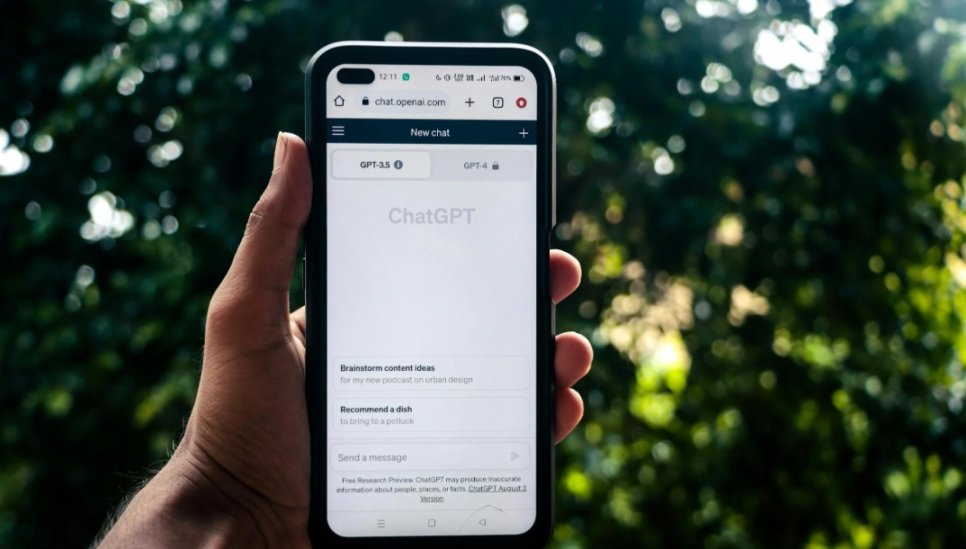Mobile Search Advertising: Strategies for Maximum ROI in 2025

In today’s ecosystem with digital marketing, mobile search ad has evolved into an important component of any effective marketing campaign from an alternative strategy. More than 92% of internet users are distributed for sufficient competitive benefits for companies that adapt the advertising efforts for mobile discovery, more than a significant margin, more than a desktop procurement that reaches material through mobile devices and mobile trade transactions.
Understanding the Mobile Search Advertising Landscape in 2025
Mobile search advertising means displaying promotional material on mobile devices when users search for platforms such as Google, Bing or Mobile Applications. Unlike traditional discovery advertising, mobile -focused expeditions are characterized by mobile experience characterized by unique user behavior, small screen size, touch navigation and site -based relevance.
When we navigate in 2025, it has become more important to understand the nuances of this scenario. Mobile ad environment is rapidly evolving with progress in AI-operated privatization, voice optimization and emerging forms of advertising that attracts attention to rapid overloaded digital places.
Why Mobile Search Advertising Deserves Priority in Your Marketing Budget
The statistics supporting investment in mobile search advertising are compelling:
- Dominant Usage Patterns: Mobile devices now account for approximately 65% of all search queries globally, with certain industries seeing mobile search rates exceeding 70%.
- Higher Engagement Metrics: Mobile search ads typically demonstrate click-through rates (CTRs) 1.5-2x higher than their desktop counterparts across most industries.
- Immediate Intent Fulfillment: Studies indicate that 76% of mobile searches for local businesses result in a visit within 24 hours, with 28% of those searches resulting in a purchase.
- Proximity Advantage: Location-based mobile searches convert at a 3x higher rate compared to the same searches performed on desktop devices.
When allocating marketing resources, these figures highlight why mobile search advertising deserves significant attention. The immediate nature of mobile search—often conducted while consumers are actively seeking solutions—creates powerful opportunities to capture high-intent traffic at critical decision-making moments.
Key Components of Successful Mobile Search Advertising Campaigns
Creating effective mobile search advertising campaigns requires attention to several critical elements:
Mobile-First Ad Creation
Unlike traditional search ads, mobile search advertisements must be conceptualized with mobile users as the primary audience. This means:
- Concise, High-Impact Copy: With limited screen real estate, every word must drive value and action
- Compelling Headlines: Front-loading key benefits and unique selling propositions
- Clear Call-to-Action: Implementing action verbs that prompt immediate response
- Ad Extensions Optimization: Utilizing location, call, and app extensions specifically beneficial to mobile users
According to research from Google’s Mobile Advertising Performance Study, ads specifically designed for mobile interfaces outperform desktop-adapted creatives by an average of 11.5% in engagement rates.
Advanced Mobile Targeting Capabilities
The precision targeting available within mobile search advertising provides unprecedented opportunities for relevance:
Location-Based Targeting
Mobile search advertising platforms offer sophisticated geo-targeting options including:
- Proximity Radius: Targeting users within specific distances from your business
- Geo-Fencing: Delivering ads to users who enter predetermined geographic boundaries
- Location Bid Adjustments: Automatically increasing bids when users search from high-value locations
Contextual Relevance Factors
Beyond location, successful mobile search campaigns leverage:
- Time-Based Scheduling: Adjusting bids and messaging based on time-of-day patterns
- Device-Specific Optimization: Tailoring experiences for various mobile device types
- Operating System Targeting: Customizing approaches for iOS versus Android users
Mobile Landing Page Experience Optimization
Even the most compelling mobile search ad will fail without an optimized post-click experience:
- Speed Optimization: Pages loading in under 3 seconds (preferably under 1.5 seconds)
- Minimal Form Fields: Reducing friction for conversions
- Touch-Friendly Navigation: Large tap targets and intuitive mobile interfaces
- Progressive Disclosure: Revealing information in digestible segments
Research from HubSpot’s Conversion Rate Optimization Report confirms that mobile landing pages with load times under 2 seconds achieve conversion rates 3.5x higher than pages loading in 5+ seconds.
Mobile Search Ad Formats Driving Results in 2025
The mobile search advertising ecosystem now offers diverse ad formats optimized for different objectives:
Text-Based Search Ads
The foundation of mobile search advertising remains text ads, though they’ve evolved substantially with:
- Responsive search ad formats that automatically adjust to available screen space
- Dynamic keyword insertion for increased relevance
- Automated ad strength assessments with AI-driven improvement suggestions
Visual Search Ad Enhancements
As visual search capabilities expand, high-performing mobile campaigns now incorporate:
- Product showcase ads with carousel functionality
- Image extensions highlighting product features
- Video preview snippets directly in search results
Voice-Activated Search Optimization
With voice searches constituting approximately 30% of all mobile searches in 2025, leading advertisers are:
- Optimizing for conversational queries with natural language
- Creating specific campaign segments for voice-activated assistant environments
- Implementing question-based keyword strategies
Measurement and Analytics for Mobile Search Advertising
Effective mobile search advertising requires sophisticated measurement approaches:
Cross-Device Attribution Modeling
Understanding how mobile search ads influence the entire customer journey involves:
- Implementing cross-device tracking solutions
- Utilizing probabilistic and deterministic matching methodologies
- Analyzing assisted conversion paths involving mobile touchpoints
Mobile-Specific KPIs
Beyond standard performance metrics, successful mobile search campaigns track:
- Click-to-call conversion rates
- Store visit attribution data
- App installation attribution
- Mobile micro-conversion metrics (scroll depth, video views, etc.)
Machine Learning Insights
Advanced platforms now leverage AI to identify:
- Optimal mobile bidding strategies by time, location, and device
- Automatic budget allocation between mobile search, display, and video
- Predictive performance modeling for mobile-specific audiences
Strategic Mobile Search Advertising Implementation: A Step-by-Step Approach
Implementing effective mobile search advertising requires a systematic approach:
Step 1: Mobile Audience Analysis
Begin by deeply understanding your mobile audience segments:
- Review existing analytics data segmented by device type
- Analyze mobile-specific behavior patterns and conversion pathways
- Identify peak mobile usage times and activity contexts
- Evaluate competitor mobile search presence and positioning
Step 2: Mobile Keyword Strategy Development
Develop keyword strategies tailored to mobile search behaviors:
- Analyze mobile-specific search query patterns (shorter queries, voice search phrases)
- Incorporate location modifiers relevant to mobile contexts
- Balance branded and non-branded terms optimized for mobile intent
- Create separate mobile bid adjustments based on performance data
Step 3: Mobile Ad Creation and Testing
Design and optimize ad creative specifically for mobile environments:
- Create multiple ad variations with mobile-optimized messaging
- Implement A/B testing for mobile-specific elements (headlines, descriptions, CTAs)
- Utilize all relevant mobile ad extensions (location, call, app, etc.)
- Develop a testing schedule for continuous mobile ad improvement
Step 4: Mobile Landing Page Optimization
Ensure post-click experiences are fully optimized for mobile users:
- Implement mobile-responsive design with touch-friendly elements
- Minimize form fields and streamline conversion processes
- Optimize page loading speed through image compression and code efficiency
- Create logical touch navigation paths based on mobile user expectations
Step 5: Bid Strategy and Budget Allocation
Develop sophisticated bidding approaches for mobile search:
- Implement device-specific bid adjustments
- Utilize automated bidding strategies with mobile-specific targets
- Allocate budget based on peak mobile usage periods
- Deploy location bid modifiers for high-value geographic areas
Advanced Mobile Search Advertising Tactics for 2025
As the mobile search landscape continues to evolve, several advanced tactics are delivering exceptional results:
In-App Search Advertising Integration
Beyond traditional search engines, successful advertisers are leveraging in-app search environments:
- Targeting high-intent searches within popular mobile applications
- Creating customized ad formats compatible with in-app search interfaces
- Developing app-specific bidding strategies based on engagement patterns
Mobile Video Search Enhancement
Incorporating video elements into mobile search campaigns:
- Implementing video extensions in mobile search ads
- Creating short-form vertical video optimized for mobile viewing
- Utilizing auto-play features that engage without disrupting user experience
Privacy-Compliant Personalization
With increasing privacy regulations, effective personalization now requires:
- Leveraging first-party data for personalized mobile ad experiences
- Implementing contextual targeting strategies that don’t rely on personal identifiers
- Creating cohort-based targeting approaches compliant with privacy frameworks
Emerging Trends Shaping the Future of Mobile Search Advertising
Several developing trends are poised to transform mobile search advertising:
Augmented Reality Integration
As AR capabilities become standard on mobile devices, forward-thinking advertisers are:
- Creating search ads that launch AR product visualization experiences
- Developing location-based AR activations triggered by search queries
- Testing virtual try-on functionalities launched from search results
Voice Commerce Optimization
With voice-activated purchasing growing rapidly:
- Optimizing for voice purchase intent phrases
- Creating frictionless voice-to-purchase pathways
- Developing voice-specific promotional strategies
5G-Enabled Rich Media Experiences
As 5G adoption accelerates:
- Implementing higher-definition visual assets in mobile search ads
- Utilizing more complex interactive elements previously limited by bandwidth
- Creating immersive post-click experiences with reduced latency concerns
Common Mobile Search Advertising Mistakes to Avoid
Even sophisticated marketers sometimes fall into these common pitfalls:
Neglecting Mobile-Specific Creative Development
Many campaigns underperform due to:
- Repurposing desktop ad copy without mobile adaptation
- Failing to optimize for smaller screen formats
- Missing opportunities for mobile-specific ad extensions
Inadequate Mobile User Experience Investment
Conversion opportunities are frequently lost through:
- Slow-loading mobile landing pages
- Complex conversion processes not optimized for touch
- Failure to implement click-to-call functionality
- Non-responsive design elements
Insufficient Cross-Device Strategy Integration
Performance measurement gaps occur when:
- Attribution models fail to connect mobile touchpoints with conversions on other devices
- Remarketing strategies don’t account for cross-device user journeys
- Budget allocation doesn’t reflect the true influence of mobile search interactions
Maximizing ROI Through Mobile Search Advertising Optimization
To achieve maximum return on investment from mobile search advertising:
Continuous Testing and Refinement
Implement rigorous testing protocols for:
- Mobile ad creative variations and messaging approaches
- Landing page layouts and conversion elements
- Bid adjustments across devices, times, and locations
Competitive Intelligence Monitoring
Maintain awareness of competitive positioning through:
- Regular mobile search experience audits
- Competitor ad messaging and offer analysis
- Auction insights reporting with mobile-specific segmentation
Advanced Mobile Analytics Implementation
Deploy sophisticated measurement approaches:
- Custom mobile conversion tracking beyond standard metrics
- Session quality and engagement depth analysis
- Revenue contribution models specific to mobile channels
The Future-Forward Mobile Search Advertising Strategy
As we go through 2025, the mobile search ad continues to provide unique opportunities to contact high -demanding consumers at the time of the claim. Organizations that use the sophisticated mobile-first approaches themselves to the targeted, customized creative, spontaneous user experience and extensive measurement permanent competitive advantage.
The most successful strategies for mobile search advertising balance technical adaptation with the real understanding of mobile user references and requirements. By focusing on relevant, valuable experience instead of just interrupting mobile travel, advertisers can convert mobile searches from a marketing channel to a sufficient business growth engine.
By implementing the strategies mentioned in this broad guide, businesses throughout the field can achieve remarkable improvement in mobile search advertising results and click, but also to motivate meaningful conversion and revenue growth to a rapid mobile-centric world.





